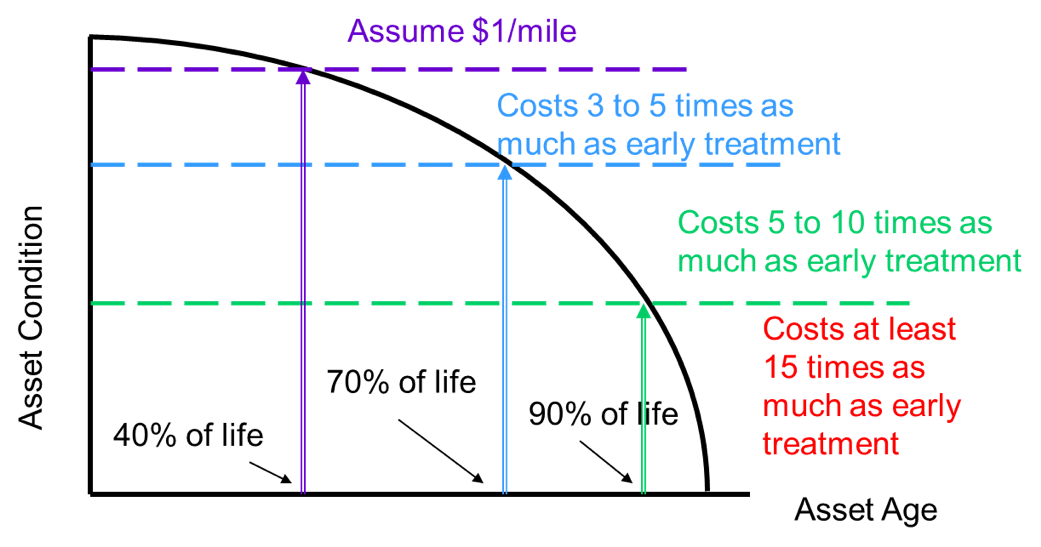4.1.3.3
Operation, Maintenance, and Rehabilitation Strategies
Treatment strategies consider how the asset, once constructed, will be managed to ensure it attains its design life, while maintaining the desired level of functionality. Special consideration should be given to long-life assets. There are three primary reasons short-term strategies are inefficient for long-life assets:
- As long-life assets age, deterioration accelerates, and there is greater risk of performance failing to meet current needs.
- As deterioration increases, the cost of treatments addressing deterioration tend to increase exponentially.
- Inexpensive treatments that restore condition but do not address the root cause of the deterioration will fail prematurely, leading to higher future costs.
These factors are reflected in Figure 4.4, which illustrates these concepts using a generic asset deterioration model. As shown in the figure, the average cost of treatment increases substantially as assets age. Additionally, the rate of deterioration tends to accelerate as assets age. Long-term strategies that use low-cost treatments early in an asset’s life cycle tend to improve asset condition very cost-effectively by deferring the need for most costly repairs.
